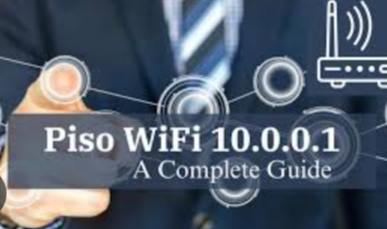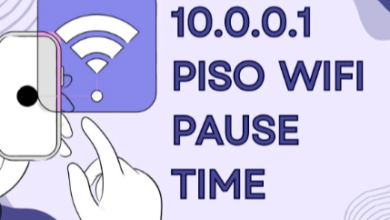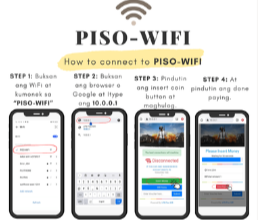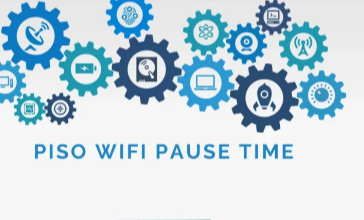1 Pause Time 0.1 Pause Time 10.0.0.0.1 Lpb Piso Wifi

The convergence of ‘1 Pause Time,’ ‘0.1 Pause Time,’ ‘10.0.0.0.1,’ and ‘Lpb Piso Wifi’ reflects a blend of cutting-edge technology and user-centric design aimed at optimizing internet usage. From empowering users to control their online presence with precision to ensuring robust network security and seamless connectivity, these elements pave the way for a holistic digital experience. By exploring the intricacies of these components, users can unlock a world of possibilities that cater to their evolving connectivity needs and elevate their digital interactions to new heights.
How ‘1 Pause Time’ Works
When utilizing the feature of ‘1 Pause Time’ in Piso Wifi, users can temporarily halt their internet session for a specific duration. This functionality promotes effective time management, providing a productivity boost by enabling users to pause distractions.
Benefits of 0.1 Pause Time
Utilizing the feature of ‘0.1 Pause Time’ in Piso Wifi offers users a brief yet impactful interruption in their internet session. This provides a strategic tool for enhancing focus and productivity.
This feature aids in network optimization and efficiency by allowing seamless connectivity, ultimately leading to increased productivity.
The short pause encourages users to refocus, resulting in a more efficient online experience.
Understanding 10.0.0.0.1
To comprehend the functionality of ‘10.0.0.0.1’ within networking systems, it is essential to delve into its significance in establishing secure and efficient connections.
This IP address breakdown plays a crucial role in network configuration basics, enabling devices to communicate and access the internet.
Understanding how ‘10.0.0.0.1’ fits into the network structure helps ensure smooth data transmission and proper network management.
Read more: 0.0.0.1 Lpb Piso Wifi Pause
Exploring Lpb Piso Wifi Features
An in-depth examination of the features offered by Lpb Piso Wifi reveals its advanced capabilities in providing efficient and secure wireless internet access.
Usage tips enhance user experience while pricing comparison ensures cost-effectiveness.
User reviews highlight satisfaction levels, and robust customer support guarantees assistance when needed.
These features collectively position Lpb Piso Wifi as a reliable and user-friendly solution for wireless internet connectivity.
Installation Process Simplified
The installation process for Piso Wifi has been streamlined to ensure simplicity and efficiency for users. With quick setup procedures and simplified installation steps, users can optimize their network easily.
Troubleshooting tips are provided to address common issues swiftly, enhancing the overall user experience. By focusing on network optimization during installation, users can enjoy a seamless and reliable Piso Wifi connection without unnecessary complications.
Troubleshooting Common Connection Issues
Identifying and resolving common connection issues is pivotal in maintaining the optimal functionality of a Piso Wifi network.
Signal strength optimization and following router placement tips are crucial for stable connections.
Efficient bandwidth allocation and effective network congestion management strategies play a significant role in ensuring smooth operations.
Maximizing Speed With ‘1 Pause Time’
Efficiently optimizing speed within a Piso Wifi network can be achieved through strategic utilization of the ‘1 Pause Time’ feature. By setting a low ‘1 Pause Time,’ network efficiency is enhanced, leading to speed optimization.
This configuration reduces latency, ensuring fast connectivity for users. Leveraging this setting effectively maximizes the network’s performance, providing a seamless and swift browsing experience for all users.
Security Measures for Enhanced Protection
To bolster protection within a Piso Wifi network, implementing robust security measures is imperative. Network encryption, intrusion detection, data access control, and firewall configuration are essential components for enhancing security.
Network encryption ensures data confidentiality, while intrusion detection identifies and responds to potential threats.
Data access control limits unauthorized access, and firewall configuration filters network traffic, preventing unauthorized connections and potential security breaches.
Customizing Settings for Optimal Performance
For achieving optimal performance, it is crucial to carefully customize the settings of the Piso Wifi network. Network optimization plays a key role in enhancing signal strength and overall performance tuning.
Bandwidth management is also essential to ensure efficient utilization of resources. By fine-tuning these settings, users can experience a smoother and more reliable connectivity experience, ultimately leading to improved satisfaction and productivity.
Future Developments and Updates
Exploring upcoming advancements and enhancements in the realm of Piso Wifi technology is essential for staying at the forefront of network innovation and meeting the evolving needs of users.
The future of Piso Wifi holds promise with upcoming innovations and technology advancements that aim to enhance user experience.
However, potential challenges and market trends must be carefully considered to ensure the successful integration of these updates into the network infrastructure.
Conclusion
In conclusion, the revolutionary features of ‘1 Pause Time’ and ‘0.1 Pause Time’ have transformed internet usage by providing unparalleled control over distractions.
The advanced capabilities of ‘10.0.0.0.1’ and ‘Lpb Piso Wifi’ have set new standards for network security and user experience.
With constant updates and enhancements, these technologies continue to push the boundaries of productivity and efficiency, making them indispensable tools for optimizing internet connectivity.




